JHP Newsletter - 2017, No. 1, 6 March
Greetings from Lamberts Bay, South Africa.
Jan and I have recently completed a two-week photo safari in Tanzania and now we're in South Africa for about a month and a half.
Travel: Yellowstone National Park, Wyoming
I spent a week in Yellowstone National Park in early January for some winter photography, and I had some serious winter conditions on my first night when it got down to -4°F (-20°C) and 7 inches (18 cm) of fresh snow fell. The fresh snow was great for photography, but this Bison (Bison bison) didn't look too thrilled first thing in the morning (below left). It continued snowing lightly throughout my first day there, and this bison bull was foraging in a great location in the afternoon (below right).
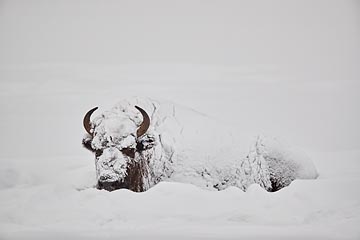
1/750 sec, f4, ISO 400
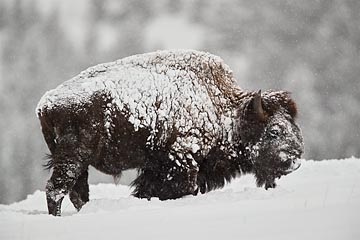
1/350 sec, f5.6, ISO 640
I got lucky on Friday The Thirteenth when I passed this Coyote (Canis latrans, below left) heading down the road. I was able to set up on a low tripod further down the road and photographed it as it kept on trotting right by me. The bull Elk (Cervus canadensis) still had their antlers, and this guy was in a nice location one morning (below right).
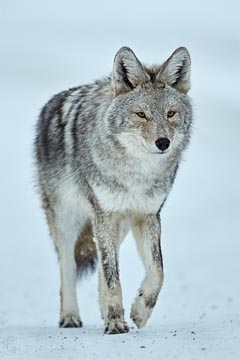
1/750 sec, f5.6, ISO 800
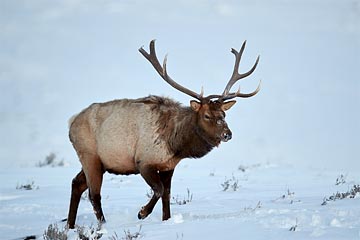
1/750 sec, f4.0, ISO 800
The low sun angle late one afternoon highlighted the textures on this snow-covered hillside, and I just had to stop and photograph it (below left). It took me three days to make this image of a group of backlit frosty trees (below right). I first saw the composition a little too late in the morning and the low brush behind the trees was also getting sun. I returned earlier the next day and got there just as the sun was illuminating the trees and not the background. However, I didn't have time to drive to the next pullout and then walk back, so I decided to turn around in the middle of the road and then just shoot from the car. Well, as I was pulling over to the far right of the road to start a three-point turn, my front-right tire went off the pavement that was hidden below the layer of plowed snow and started going down the steep shoulder. As I tried to get all four wheels back up on the pavement, my right-rear tire went off the pavement and I was done for. I flagged down a passing vehicle and then dug out my tow strap and special tow hitch that I installed on the other vehicle. By the time I was back up on the road, the tree and even more of the background was illuminated so I missed the shot again. The third time was a charm. I got there in plenty of time and could set up on a tripod and wait for the sun to fully illuminate the trees before making my exposure.
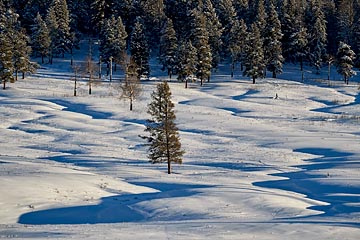
1/180 sec, f9.5, ISO 100
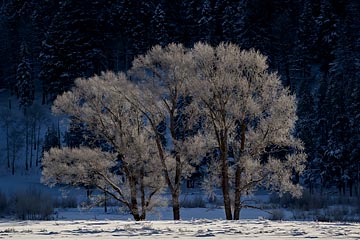
1/350 sec, f8, ISO 100
Travel: Grand Teton National Park, Wyoming
I spent six nights in Grand Teton National Park in mid January for more winter photography. Wildlife photography was generally slow, but I did have several opportunities to photograph Greater Sage-Grouse (Centrocercus urophasianus, below left). I only had one opportunity to photograph a Red Fox (Vulpes vulpes or Vulpes fulva), but it was cooperative subject in a good location (below right).
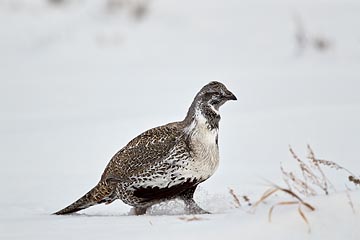
1/1500 sec, f5.6, ISO 500
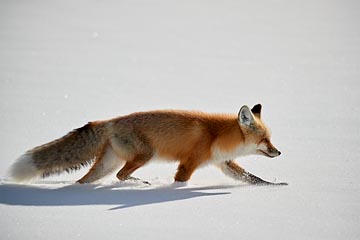
1/2000 sec, f5.6, ISO 100
I spent most of my time looking at the landscape, and after some fresh snow I photographed this small clump of evergreens on a perfectly-sloped infinite backdrop (below left). Bare trees have a special appeal, and I liked the two groups of three trees against another hillside (below right).
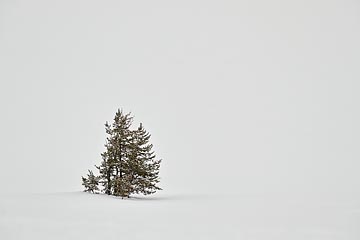
1/180 sec, f8, ISO 100
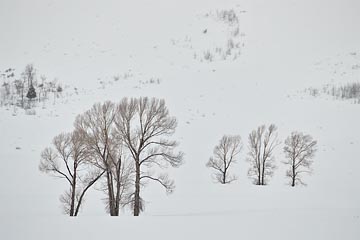
1/180 sec, f8, ISO 200
Travel: Ngorongoro Crater and the Serengeti, Tanzania
My two-week photo safari to Tanzania in early February was very successful. It was especially good for cats and also good for newborn babies! It was also great to have Jan along too for her first visit to Tanzania.
We started off with four nights at Ngorongoro Crater which has one of the highest animal densities in all of Africa. We had several opportunities to photograph lion cubs (Panthera leo), and my favorite image is this one of them practicing their take-down technique on their mother (below left). The "prey" didn't look like she was having much fun. The best cat photo op was this Caracal (Caracal caracal) with a baby Thomson's Gazelle (Gazella thomsonii, below right). Caracal are extremely rare to see, and the opportunity to photograph one while it was eating a baby Tommy was incredible!
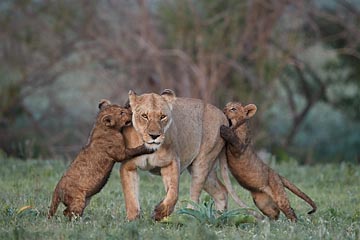
1/350 sec, f5.6, ISO 1600
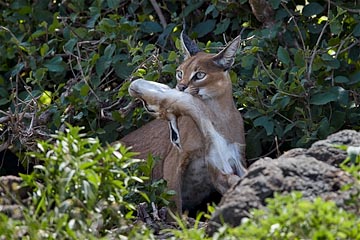
1/1000 sec, f8, ISO 1600
We just missed seeing a Plains Zebra (Equus burchelli) getting born, but we were able to photograph it taking its first steps (below left). We also had a nice time with a group of Vervet Monkeys (Chlorocebus aethiops). The infants ride on their mother's chests when they’re small, and I was finally to make a nice image of that behavior (below right).
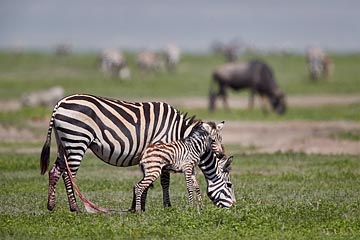
1/1000 sec, f5.6, ISO 200
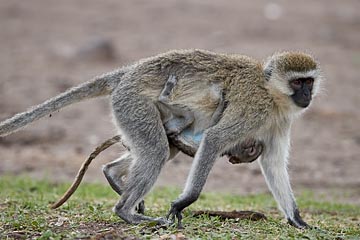
1/1500 sec, f5.6, ISO 1600
We spent about half an hour with a very cooperative Secretarybird (Sagittarius serpentarius) one morning, and it posed nicely for portraits several times (below left).
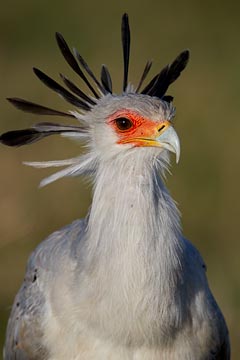
1/2000 sec, f8, ISO 800
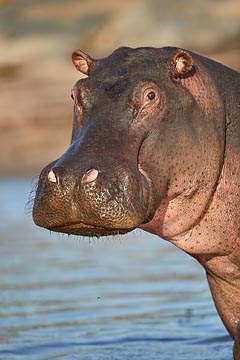
1/3000 sec, f4, ISO 800
Then we spent two nights in the central part of Serengeti National Park. One of my favorite places to photograph there is at the Retima hippo pool where you can get out of the vehicle and get down to water level. For the first time on this trip, several Hippopotamus (Hippopotamus amphibius) walked upstream fairly close to me on their way to the hippo pool, and this one paused to examine me after it had passed (above right).
The Migration of Blue Wildebeest (Connochaetes taurinus) and Plains Zebra (Equus burchelli) was "in" while we were in the Central Serengeti, and the dust-filled air shortly after sunrise created wonderful conditions for photography (below left). The Central Serengeti is usually a great place to photograph Leopard (Panthera pardus), and we had several good opportunities on this trip. We photographed this particular male two different times (below right), and he was particularly cooperative both times!
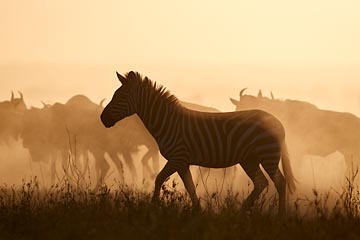
1/1000 sec, f5.6, ISO 200
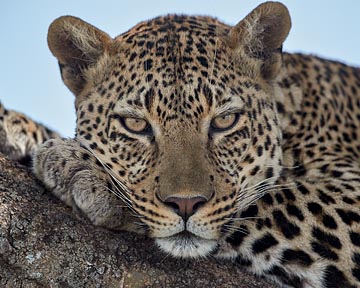
1/1000 sec, f5.6, ISO 100
We finished up the safari with seven nights in the Ngorongoro Conservation Area which borders the southern edge of Serengeti National Park. We had several great opportunities to photograph Cheetah (Acinonyx jubatus) while there. The first image (below left) is one of four Cheetah were hanging out together and were likely recently thrown out by their mother. I was great to see all of her cubs reach adulthood, but one of them had a bad front-right leg so its days were probably numbered. We spent one morning with a Cheetah mother with a fairly young cub, and the cub was a great subject (below right).
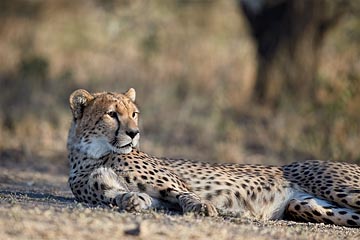
1/1500 sec, f4, ISO 640
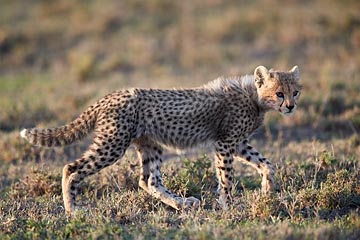
1/1000 sec, f5.6, ISO 1250
We had two Cheetah chases including this one with a different mother showing her older cub how to take down a baby Blue Wildebeest (below left). We also had a brief encounter with some African Wild Dog (Lycaon pictus, below right).
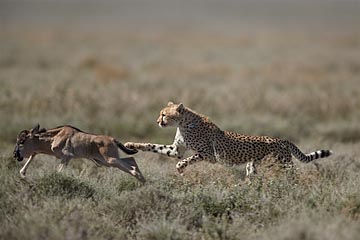
1/750 sec, f5.6, ISO 125
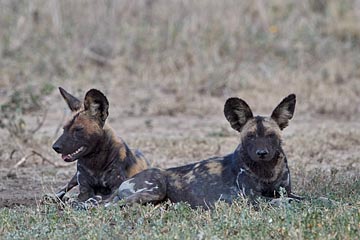
1/350 sec, f5.6, ISO 1000
The Migration had moved south during our stay and the Blue Wildebeest (Connochaetes taurinus) started to drop their calves. We spotted two females giving birth one morning and kept up with one of them until she dropped her calf. She wasn't a very good mother and didn't do much to clean up the calf after it was born. In this image (below left), the calf is trying to stand up for the first time, about one minute after it was born! The calf was fairly stable at four minutes of age, and by ten minutes they were rejoining the herd.

1/1000 sec, f5.6, ISO 200
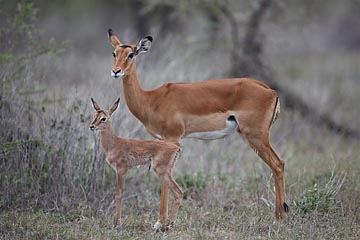
1/500 sec, f4, ISO 320
A highlight for me was finding this newborn Impala (Aepyceros melampus), probably about half an hour old (above right). The mother was busy cleaning the calf and eating the afterbirth when we arrived.
We found a litter of four approximately four-week old Lion (Panthera leo) cubs under a dense acacia thicket, and they were the youngest cubs I've ever photographed. The shooting conditions were poor due to the limited sight lines, but I was able to make a couple of good images like this one (below left). We also had a nice, but brief, encounter with a Serval (Felis serval) late one morning (below right), another rare cat.
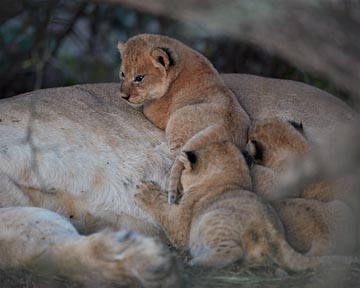
1/45 sec, f4, ISO 1600
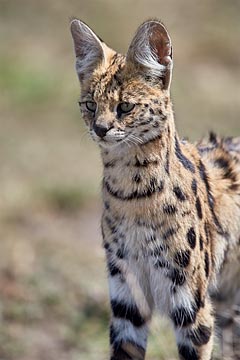
1/1000 sec, f5.6, ISO 400
We didn't photograph many birds on this safari, but I was able to photograph this Tawny Eagle (Aquila rapax) as it called out (below right). I also photographed a d'Arnaud's Barbet (Trachyphonus darnaudii) for the first time (below right).
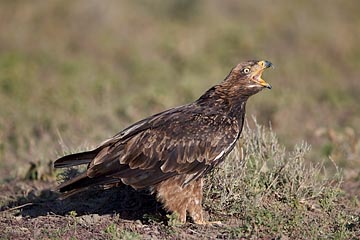
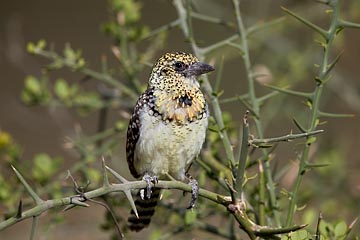
I'll tell you about South Africa next time.
Take care and happy shooting.
— James
James Hager Photography :: www.jameshagerphoto.com




